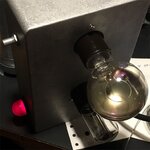I recently found in an obscure web page a reference to a workable radio fuze developed in Japan before the end of the war. I would post here the link, but following a crash and update of the browser, the cache is gone and I cannot find it again for the love of God!
Supposedly, this fuze didn't work in the same way as the allied one (radio waves reflected by target) but it was simply a remotely activated detonator (thus a radio receiver), that spared the artillery men the task of setting the fuze in advance before feeding the round to the gun; another advantage should have been that the shell could be made to explode closer to the target (how? Doubt a tracer could suffice). These experimental fuzes were said to be operationally employed only by the one-of-a-kind 155mm AA artillery outside of Tokio that was capable of bringing down with ease a B-29 even when flying at 30000'. The page went on to say that US soldiers recovered a whole cache of them but, after having judged them inferior to their own VTs, they destroyed them quickly in order not to share them with the Soviets.
Can anybody confirm that this story is true or is just some made up trash?
Supposedly, this fuze didn't work in the same way as the allied one (radio waves reflected by target) but it was simply a remotely activated detonator (thus a radio receiver), that spared the artillery men the task of setting the fuze in advance before feeding the round to the gun; another advantage should have been that the shell could be made to explode closer to the target (how? Doubt a tracer could suffice). These experimental fuzes were said to be operationally employed only by the one-of-a-kind 155mm AA artillery outside of Tokio that was capable of bringing down with ease a B-29 even when flying at 30000'. The page went on to say that US soldiers recovered a whole cache of them but, after having judged them inferior to their own VTs, they destroyed them quickly in order not to share them with the Soviets.
Can anybody confirm that this story is true or is just some made up trash?

